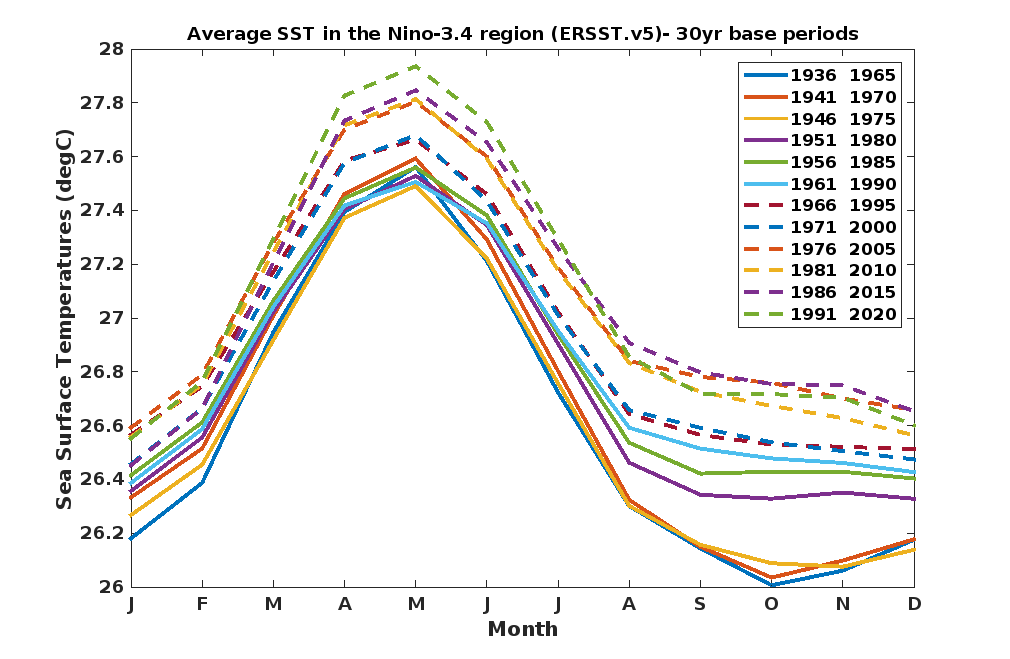|
Due to a significant warming trend in the Niño-3.4 region since 1950, El Niño and La Niña episodes that are
defined by a single fixed 30-year base period (e.g. 1981-2010) are increasingly incorporating longer-term trends
that do not reflect interannual ENSO variability. In order to remove this warming trend, CPC is adopting a new
strategy to update the base period.
There will be multiple centered 30-year base periods that will be used to define the Oceanic Niño index
(as a departure from average or "anomaly"). These 30-year base periods will be used to calculate the anomalies
for successive 5-year periods in the historical record:

So, ONI values during 1950-1955 will be based on the 1936-1965 base period, ONI values during 1956-1960 will be
based on the 1941-1970 base period, and so on and so forth.
In real-time operations, the past 30-year base period (e.g. 1991–2020) will continue to be used to compute the departure from average. However, CPC will create an additional 30-year base period every 5 years (the next update will be at the beginning of 2026). When these 5 year updates occur, the ONI values over the most recent decade will change slightly because of the inclusion of more recent data.
This new strategy has two distinct advantages:
(1) The classification of El Niño and La Niña episodes will remain fixed over most of the historical record.
So, future adjustments to the base period will not modify the past classification of episodes. For example, for the set of years between 2001–2005, the ONI values (and El Niño and La Niña episodes) will permanently be calculated as the departure from the 1986–2015 base period.
(2) A centered 30-year base period means that El Niño and La Niña episodes will be defined by their contemporary
climatology. For example, the La Niña episode that occurred in mid-1950s will have negative ONI values that are
representative of the climatology at that time and not some future climatology.
The monthly Niño-3.4 index (which is used to calculate the ONI values) that uses these new centered 30-year base
periods ("ClimAdjust") are provided in this text file:
Monthly Niño-3.4 index
|


